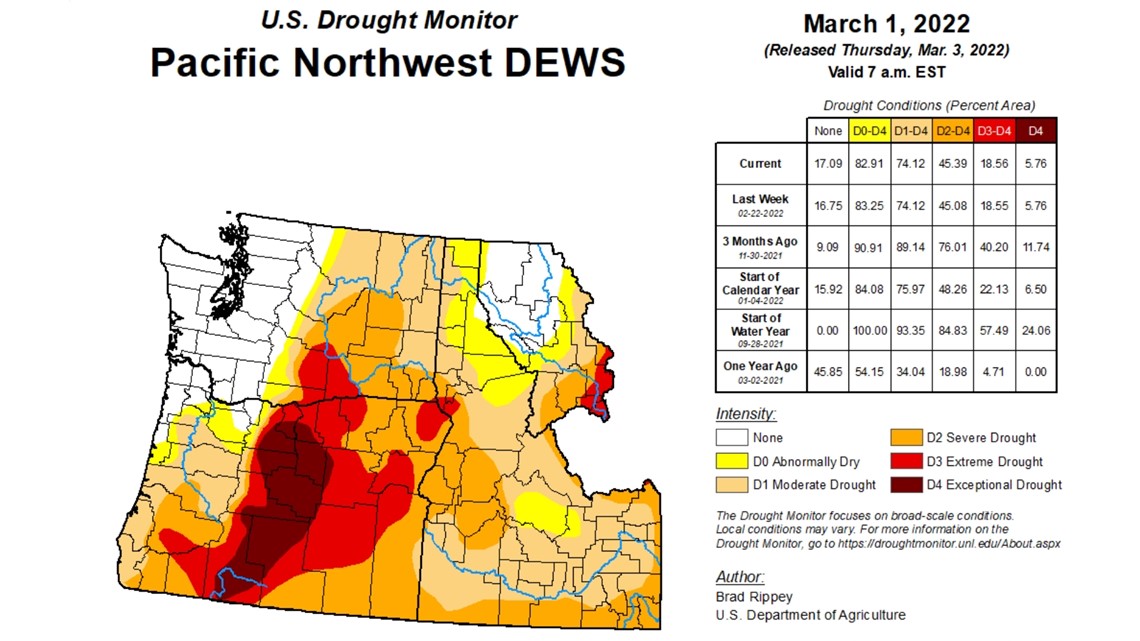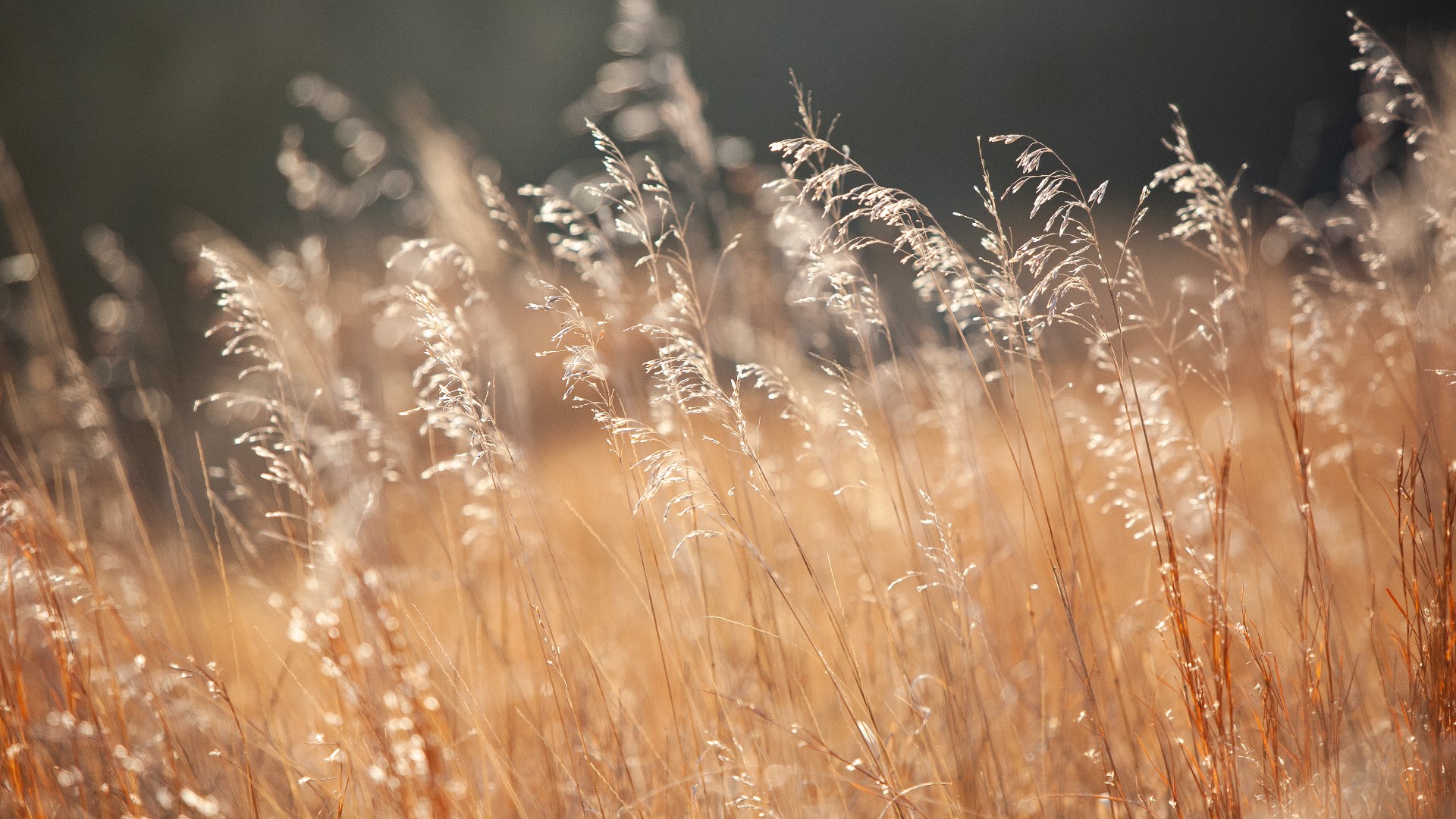SEATTLE — Following a general lack of precipitation in January and February, the current drought across the Pacific Northwest is likely going to intensify with severe impacts expected for some regions.
However, despite still having below normal natural water supply for throughout most of the state, Washington is in better shape when it comes to drought than Oregon and Idaho.
During a briefing from the National Oceanic and Atmospheric Administration (NOAA), Washington state Climatologist Karin Bumbaco said that snowpack fell from 33% above normal across the state to 22% below normal from Jan. 11 to March 1.
Yet compared to its neighbors, Bumbaco said, “Perhaps we’re the winners in terms of drought this time around.”
The U.S. Drought Monitor shows that more than 90% of Oregon and more than 84% of Idaho is experiencing moderate to exceptional drought conditions. Meanwhile, just over 51% of Washington is experiencing the same conditions. That 51% is entirely on the eastern side of the state, with areas of central and southern Washington experiencing the worst of it.


Experts on the briefing pointed to the dry spell over the last six weeks for much of Oregon and central Washington as really stalling any chance for recovery.
The unusual dryness has been caused by a ridge of high pressure that has been parked near the Washington coast and is diverting wet weather systems away from those areas.
Nick Bond, another Washington climatologist, said the forecast through the rest of March will see more precipitation for the western part of the state but not to the east where it is most needed.
Although multi-year deficits in terms of precipitation are likely going to continue for interior parts of the region, Bond said there is no indication that 2022 will see as warm and dry a spring as in 2021.
The summer of 2021 was also severe with record-breaking temperatures from June 26 through July 2, but Bond said there’s a very small chance the state will see those temperatures again this year.
“That's not the new normal. I would be astonished if we had anything of that severity this year,” he said. “It's possible, but I would put the odds at considerably less than 5 or 10% for something of that magnitude.”
He added that as climate change continues to grip the planet and warming trends persist, heatwaves like the one in 2021, which saw 100 heat-related deaths, will be more likely.
Although Washington is in the best shape in the Pacific Northwest when it comes to drought, the situations in Oregon and Idaho could still have deep impacts on the state.
Bumbaco said that with central Oregon experiencing some of the worst drought conditions in the region and wildfires more likely because of it, Washingtonians could be hit with more wildfire smoke.
Also, the Walla Walla River crosses Washington’s southern border and can be taken by Oregon in especially dry years. The Snake River could also become low due to the lack of snowpack and precipitation in Idaho.
According to NOAA, areas of Oregon and central Washington would need 200% of normal precipitation levels over the next three months to recover from the current drought.

